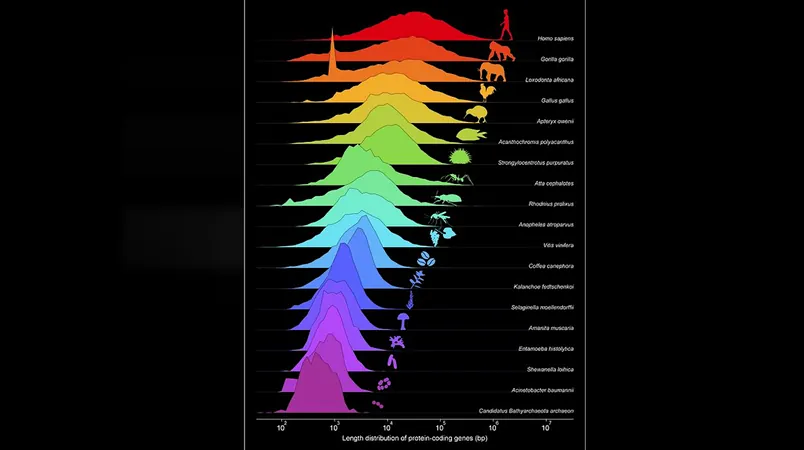
Revolutionary Discovery: How Eukaryotic Cells Changed Evolution Forever!
2025-04-18
Author: Li
The Dawn of Eukaryotic Cells: A Game-Changer in Evolution
A groundbreaking study published in PNAS by an elite team from Mainz, Valencia, Madrid, and Zurich is shedding light on one of the most pivotal moments in the history of life on Earth: the emergence of eukaryotic cells. This collaborative research is set to redefine how we understand the complexity of biological evolution.
Bridging the Evolutionary Gap: The Black Hole of Biology
While the widely accepted endosymbiotic theory explains how these cells originated, there remains a significant gap, often referred to as the "black hole" in biology. This gap represents billions of years of evolution without clear transitional forms between prokaryotes and eukaryotes.
The Evolutionary Algorithm: What Makes Eukaryotic Cells So Special?
Dr. Enrique M. Muro from Johannes Gutenberg University Mainz explains that the study combines theoretical models with observational data to understand how the architecture of genetic information transformed over time. The discovery that protein-coding genes have increased in length and follow log-normal distributions across the tree of life unveils a fascinating aspect of evolutionary biology.
Gene Length: A Key Indicator of Complexity
Through analyzing nearly 10,000 proteomes and over 33,000 genomes, the researchers found that gene lengths not only increased over time but did so in a scaling-invariant manner. This means the average length of protein-coding genes can serve as a reliable proxy for the complexity of an organism. It’s a quantitative leap that could change how we approach biological studies!
A Critical Turning Point: The 1,500 Nucleotide Threshold
The study identifies a critical gene length of 1,500 nucleotides as a threshold that marked a significant evolutionary phase transition. This juncture distinguishes two major pathways: one leading to prokaryotes and the other to eukaryotes with their complex genetic architecture.
Algorithmic Phase Transition: The Shift in Protein Growth Dynamics
The study brilliantly likens this evolutionary change to critical phenomena in physics, noting that the transition was algorithmic in nature. As protein lengths increased, the search for new protein functionalities became increasingly complex. This tension was resolved when non-coding sequences were integrated, fundamentally altering how genes operate and paving the way for more complex cellular structures.
An Interdisciplinary Marvel
This research represents a monumental intersection of computational biology, evolutionary studies, and physics. Dr. Muro points out that the study not only answers long-standing questions but also opens the door to new avenues of research across various disciplines, holding promises for fields like energy and information theory.
Unlocking Major Evolutionary Transitions
The emergence of eukaryotic cells stands as the most significant leap in life's complexity, setting the stage for crucial developments like multicellularity and social behaviors. This transformative study reshapes our understanding of evolution and illustrates how eukaryotes acted as a launchpad for the miraculous diversity of life that exists today.

 Brasil (PT)
Brasil (PT)
 Canada (EN)
Canada (EN)
 Chile (ES)
Chile (ES)
 Česko (CS)
Česko (CS)
 대한민국 (KO)
대한민국 (KO)
 España (ES)
España (ES)
 France (FR)
France (FR)
 Hong Kong (EN)
Hong Kong (EN)
 Italia (IT)
Italia (IT)
 日本 (JA)
日本 (JA)
 Magyarország (HU)
Magyarország (HU)
 Norge (NO)
Norge (NO)
 Polska (PL)
Polska (PL)
 Schweiz (DE)
Schweiz (DE)
 Singapore (EN)
Singapore (EN)
 Sverige (SV)
Sverige (SV)
 Suomi (FI)
Suomi (FI)
 Türkiye (TR)
Türkiye (TR)
 الإمارات العربية المتحدة (AR)
الإمارات العربية المتحدة (AR)